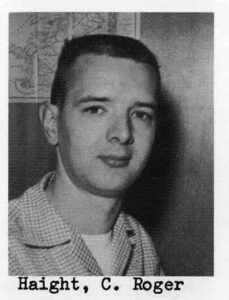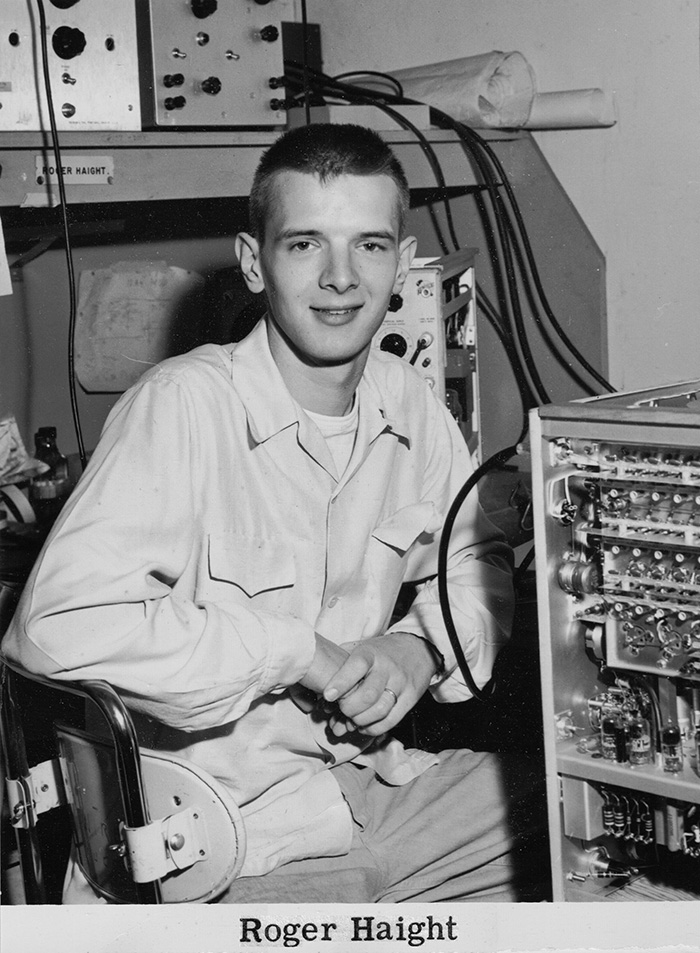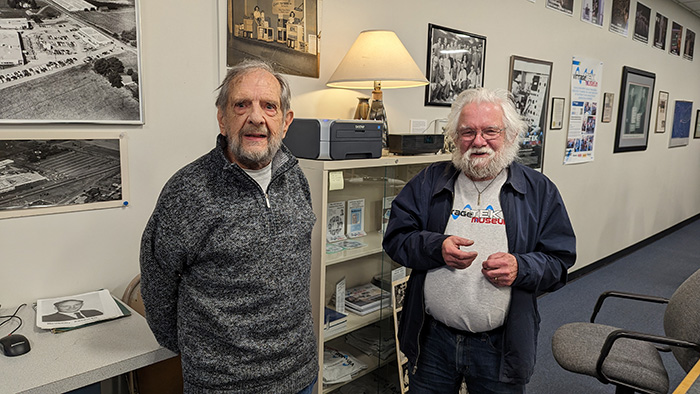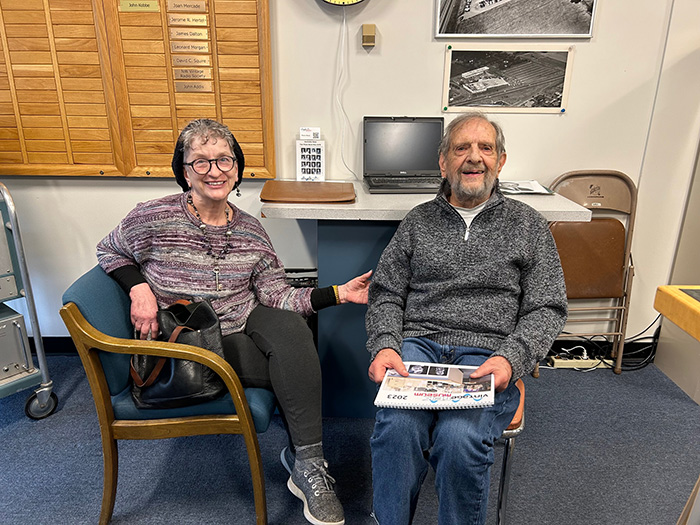We had the privilege of touring Roger Haight and Joan Becker through the museum.
Roger started at Tek as employee, about number 69, at the Hawthorne facility in 1950. He served in the Navy in the South Pacific post-WW2 as an electronics technician on the USS Thomas Jefferson and later worked in the shipyards. He attended OSU and was going to PSU when he applied at Tektronix. There were no openings in the test group so he started in the metal shop working for Milt Bave, Tektronix first mechanical engineer and the designer who created the mechanical package for the Type 511. Roger described him as a “wonderful guy”. He described the early days at Hawthorne as a place where “everybody worked so hard and everybody did a little bit of everything”.

During his visit Roger examined the open-chassis 511 near the reception desk and noted it was a later model because of the power supply.
After about a year at Tek, Roger transferred to the scope test group at the Sunset plant where he worked on, as he described: “the 511, the 512, the 513, the 514, and right down the line”. At some point in the mid-1950s Earl Wantland, future Tek president and his co-worker at the time at the next bench, told Roger he was going to have a new job establishing Tektronix international manufacturing capability. Earl wanted Roger to be available if he had questions regarding testing at the new facilities. This eventually transitioned into a career where Roger was the engineering liaison between the Beaverton plant and the new overseas manufacturing facilities at Guernsey, Heerenveen, Hoddesdon and Sony/Tek. He introduced new products to the offshore facilities, was the source of technical information, and coordinated training at Beaverton for them.

He recalled how instruments were displayed at trade shows prominently with the cabinet removed. This was “because we were pretty proud of the work we did”. He recalled the benefit of the ceramic strips and that they came along “because we had the right guy at the right place”. The guy was Ted Goodfellow. Roger said the ceramic strips made Tek instruments sustainable and wiring errors were eliminated with their implementation. Roger also recalled meeting Allen Du Mont at a Wescon show and talked briefly with him.
Roger remembered that he attended the famous annual Guernsey beach parties. When asked, he smiled and replied: “Yes, oh yes”. He also set up the Wine Club. Joan commented they had many of the original wine labels from the early days.
He participated in the Tek Flying Club in the early days with Jack Murdock, John Kobbe, Bill Pollits, Norm Winningstad and several others. Every year there was a father/son trip to British Columbia to fish. He recalled a 50cc foldup scooter John Kobbe carried in the back of his plane. This scooter is shown in our Tektronix Flying Club film.
Roger pointed out how many of the early engineers came from a background where they were interested in radio. Many had worked on radio and radar during their military service which was a benefit for their work at Tektronix.
There was discussion of the “Poodle Room”, a drinking establishment across the highway from the Sunset Plant. Phil Crosby, who recalled working with Roger, mentioned that some Tektronix instruments might have been designed on the back of Poodle Room bar bills.

Roger retired from Tektronix in 1983. He bought a sailboat and took a remarkable seven-year voyage, travelling down the west coast to the Panama Canal and ending the journey in the Great Lakes after seven years. He will be 95 years of age next month. It was a great visit with lots of historical information.

